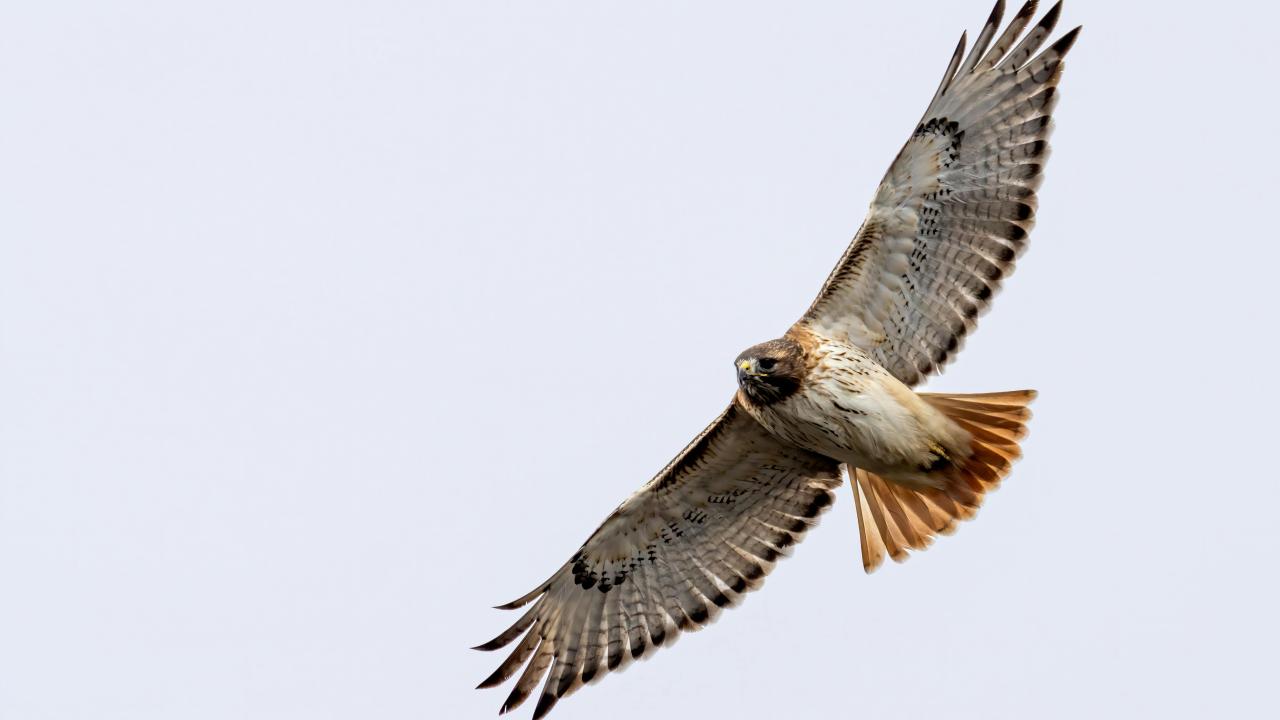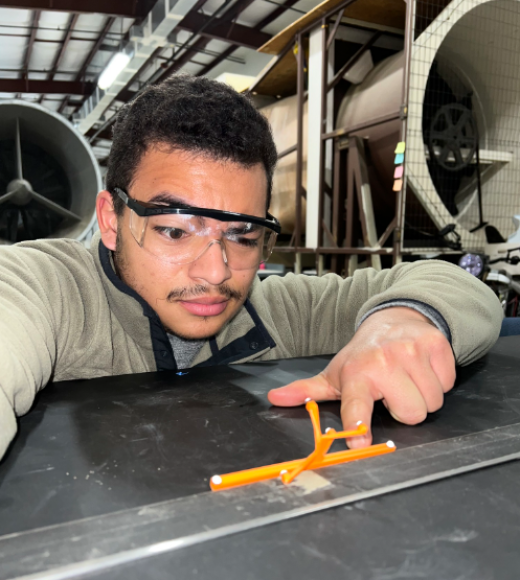
Engineering Animation: Hawk Wing Research Fuses Science with Movie Magic
The Department of Mechanical and Aerospace Engineering is leading a collaborative research initiative that incorporates biology, animation and robotics to understand the biomechanics within the avian wing to inform the wing design of uncrewed aerial vehicles.
Part of that initiative involves working with an industry animator, who takes data from scientists at the University of California, Davis, to better inform their computer graphic imagery, or CGI, technology, while also providing real-time feedback on new research.

Francisco Jackson, who is pursuing a master's degree in mechanical and aerospace engineering at UC Davis, is one such scientist. Jackson researches how the wing of a red-tailed hawk morphs, or how the bird's wings and wrists go from a resting position into a flying position.
"A bird's wings are tucked in when they're at rest, and then they start flying, you'll see the wings extend in the air," Jackson said. "We call this active morphing. Humans can move their wrists pretty much any way they want. A bird can't do that. Once a bird's wrist starts moving out, the elbow has to extend. The wing is not separated joints like our arms."
Much of Jackson's work is conducted at the California Raptor Center at the UC Davis School of Veterinary Medicine, where he dissects cadavers of red-tailed hawks who have died of natural causes. He then works out the math and physics that govern the wings' mobility.
Once he has enough data, modeling and information, he sends it off to the project's collaborator Juan Sebastian Niño Flores, a senior animator at The Mill, an international visual effects company. Niño Flores's animation credits include work on Disney's The Little Mermaid, Avengers: Endgame, and Fantastic Beasts and Where to Find Them.
After receiving the data, Niño Flores creates a low-render preview animation, going back and forth with Jackson to see whether the data has translated well to animation. For Jackson, the almost immediate representation of his research is both exciting and telling.
"This project is one where you can visually tell if you've done your math right or wrong," he said. "We've seen enough birds flying that we should know how they look, and if the model doesn't look like a bird flying well, there's something wrong with the math. But it's very enjoyable to see. It's not every day you get to do math that will influence animation."
The collaboration between Jackson and Niño Flores contributes to the overall research initiative led by mechanical and aerospace engineering professors Christina Harvey, who is Jackson's mentor, and Jonathon Schofield and computer science professor Michael Neff. The ambitious project received one of the College of Engineering's Next Level Research Awards for 2023.
Jackson will soon be able to juxtapose his findings against data from live birds in flight at a new bird research facility Harvey is developing with the California Raptor Center, which will use two different photographic technologies to image birds in flight maneuvers and make 3D models of their wings.
While the big research picture is always in the back of Jackson's head, seeing his work being used in real-time is a huge motivator in his day-to-day research. Compared to research that may take years or decades to achieve meaningful impact, Jackson sees the results of his research in the now.
"I thrive in this kind of fast-paced environment," he said. "It's a whirlwind of a trip."
